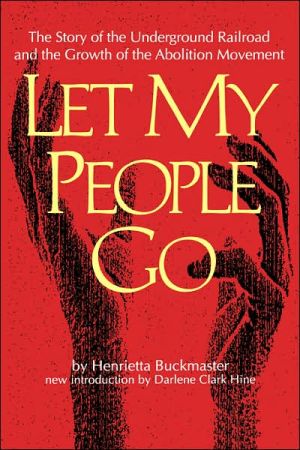

 |

|

The average rating for Let My People Go: The Story of the Underground Railroad and the Growth of the Abolitionist Movement based on 2 reviews is 4 stars.
Review # 1 was written on 2016-05-06 00:00:00 Armando Eskobar Armando EskobarI wanted a book about the Underground Railroad; here's the book my research led me to, and I'm glad it did. I had a pretty murky understanding of what the whole thing was about - like, Harriet Tubman and a bunch of underground tunnels? Now I know better. Here are all the stories you know: Nat Turner, Harriet Tubman, Frederick Douglass, Solomon Northup (the Twelve Years a Slave guy), John Brown. The slave escape that inspired Uncle Tom's Cabin and the story that inspired Beloved. Here also are important figures I didn't know about: - Isaac Hopper, who with other Quakers in the early 1800s "became what can fairly be described as the first operating cell of the abolitionist underground." - Levi Coffin, another Quaker (there were lots of Quakers! Go Quakers!) known as "The President of the Underground Railroad'; - Josiah Henson, an escaped slave who founded a Canadian settlement for other escapees; - Anthony Benezet, who started a black school in 1750 and 'helped convert Benjamin Franklin and others to abolitionism, by demonstrating that his students were capable of the same level of achievement as whites." - Jermain Loguen,an escaped slave who became a popular preacher - William Lloyd Garrison, whose fierce Boston-based paper the Liberator was an important abolitionist resource There are a ton of exciting stories about the Railroad - of course there are - and an awful lot of them are in this book. I totally dug reading it - even with its fairly frequent lapses into breathless, purpleish prose - and I learned everything I wanted to. Random other quotes "The British colonies of North America and the United States imported only about 6 percent of the between 10 and 11 million slaves that were brought from Africa." "From the earliest days of settlement, at least some colonists had equivocal feelings about slavery. In 1641 Massachusetts forbade slavery." Philadelphia was the early center of the underground railroad, and Quakers were early pioneers: around 1800, "in the cobbled lanes of Philadelphia, fugitive slaves, free blacks, and white Quakers were discovering one another, and recognizing one another as allies in the struggle that was to come." Other books this one led me to I've read slave narratives by Northup, Josiah Henson, Frederick Douglass and Harriet Jacobs. This book also pointed me in the direction of Olaudah Equiano, Henry Bibb and Moses Roper. William Wells Brown was the country's first African-American novelist. |
Review # 2 was written on 2014-07-15 00:00:00 Shelley Weems Shelley WeemsA truly, truly amazing read. A page-turner yet full of fascinating information. Best of all it debunks the idea that Blacks were passive victims during slavery who made no attempts to free themselves. If you are interested in this country and the people who created it, White and Black, read this book. |
CAN'T FIND WHAT YOU'RE LOOKING FOR? CLICK HERE!!!